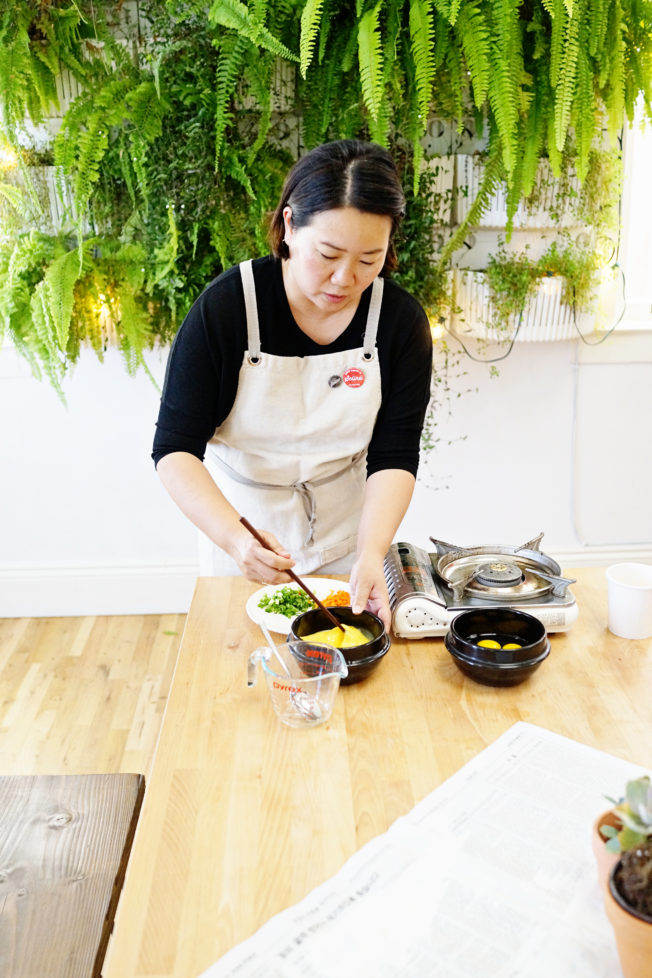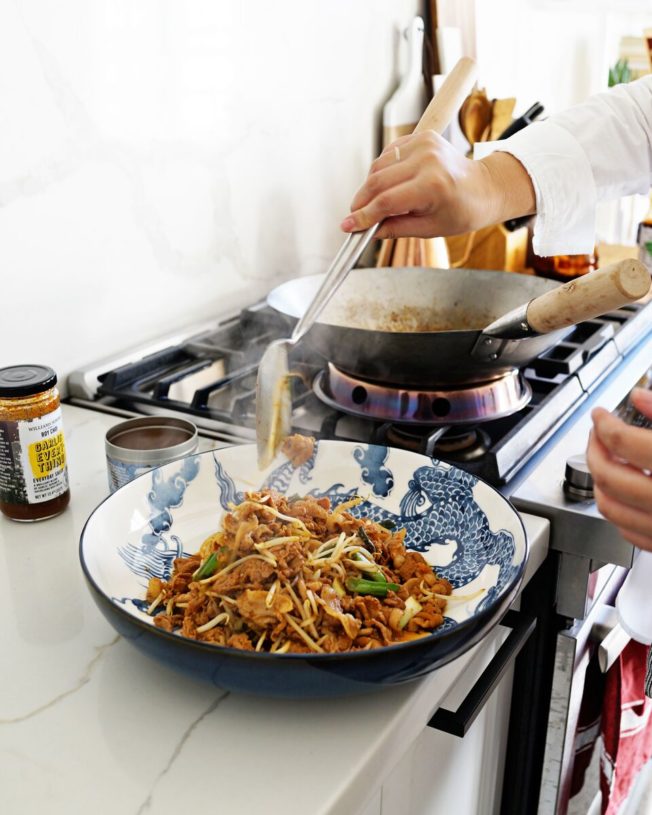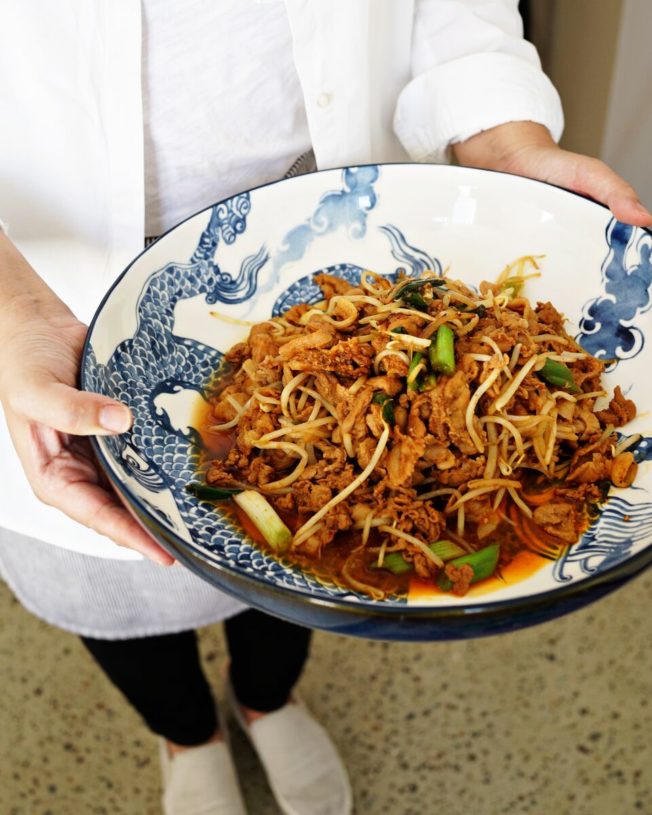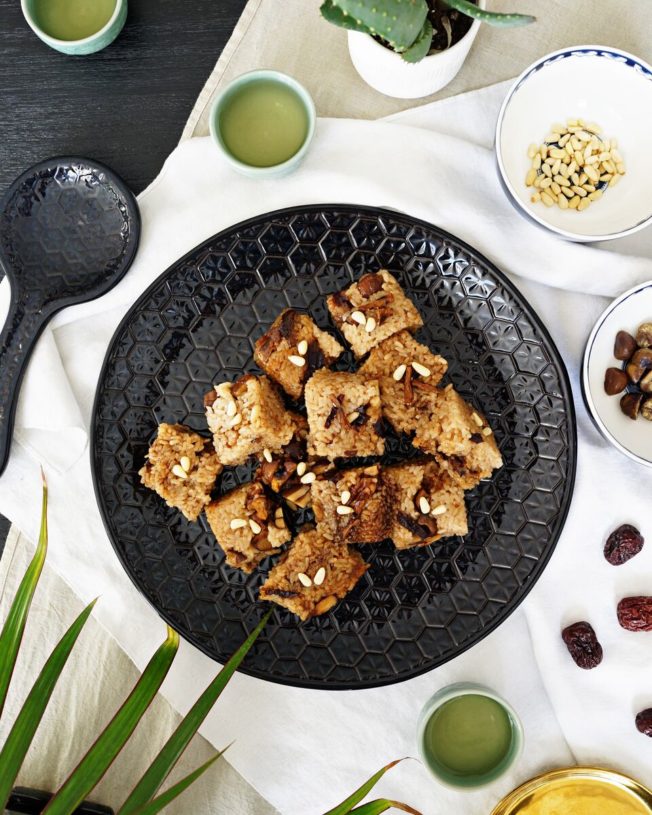
Selina S. Lee, teaching at her Banchan Workshops. Photo © Lisa Wong Jackson.
Meet chef, cooking instructor and blogger Selina S. Lee, who moved from Seoul, South Korea to the Bay Area when she was 12. After 20 years of working as a graphic designer she made the shift to focus on her passion: teaching Korean cooking.
How She Made the Change
“Every day I was conflicted,” she says. “I was working at my job and I was thinking about cooking. Everyone thought I would just retire from that same company, but I just had to walk away.” Leaving her career in design behind, she began to teach small classes about Korean cuisine, called “banchan workshops,” after the small dishes traditionally served with meals. They were a hit. (She’s particularly excited about an upcoming bibimbap workshop.) She left her day job, launched a website and a culinary class business, and the rest is history.
Here are Lee’s tips for cooking Korean food at home, the three ingredients she always keeps in her pantry, and how she gets her two young boys to eat their vegetables:

Selina S. Lee cooking a spicy pork stir-fry.
What’s a common misunderstanding about Korean food?
People think it’s too hard. There’s a layer of intimidation. They think the prep time is long and it’s too much work. That’s pretty much what my blog and the workshop are about: Try to make it a little more approachable but without losing the traditional flavor and nuances. Also, I get a lot of comments about Korean food being unhealthy. [People are] more exposed to what’s on offer at restaurants… like Korean BBQ houses. But it can be healthy and it can be approachable.
Banchan are largely vegetables, right?
Yes. There are vegetables, but it’s such a big array of stuff. Primarily vegetables, but a lot of fermented stuff like fish, pickles, and kimchi.
Were you a lifelong Korean cuisine cook?
I wasn’t really into cooking; I’d been a graphic designer for 20 years. The cooking—I didn’t get into the kitchen till I had my kids. Obviously, somebody has to cook! I had no idea that I had a talent or interest or passion for it, but always had good influences, from my mom and grandmother. I saw them cook. There was a lot of talk about it.
How’d you start a banchan workshop?
I started hosting these small gatherings. This is my fourth year into it; I started them because I wasn’t into cooking. It was stressful, but I wanted to find a way to like it. I thought, “If I do it with my friends, I could kind of get into it,” so I invited my close friends over. We cooked up a storm and had a feast at the end.

The finished pork stir-fry!
How’d it become a business?
After two or three pilots, I decided, “Why not open it up to the public?” I started partnering with all these different platforms & people who might be interested in collaborating with me. This coming Sunday, I’m hosting a bibimbap workshop. For each workshop, I’ve been doing a different theme. Kimchi, obviously, is the most popular one. Then very basic Korean rice and noodles, Korean street food, soup and stew.
Anything exciting coming up?
Yes. This year I have some really exciting ones coming up, like “king’s table,” Korean food passed down from the king’s court. There’s a part of Korean cuisine that’s like a royal cuisine. It’s the food that’s been served and passed down for generations. It was served to the king in the Joseon era in the 15th-18th century. The core [of Korean cuisine] stems from that, especially the region of Seoul that I’m from. I’ve been doing a lot of research and focusing on classic ones served at king’s table and how it’s eaten and prepared now.
What else don’t people know about Korean cuisine?
Korean food is very regional. You find very different flavors from the northern part, to as you go down south, where it gets really spicy and funky. There are 100 different types of kimchi. Each region has its own version of [the cuisine]. There’s so much to explore. My entire family is from Seoul, where the food is very classic, clean and delicate, and very mindful.

Lee’s Korean “medicinal rice cake,” to celebrate the Lunar new year.
Any tips for stocking up on Korean ingredients?
Get familiarized with the pantry items. On my website, there’s a a short list of basic Korean pantry stuff, mostly seasoning. Most people are already familiarized but don’t know where to get them or what brand is good. Lots of American groceries carry them these days, and with amazon, it’s much more accessible. It’s important to know the basic pantry, start there, and then stock up. Once you have all your stuff, it’s so much easier to follow recipes.
What are the top 3 ingredients you use?
Gochujang, the Korean chili paste, doenjang, the fermented paste, and soy sauce (ganjang). They’re the three pillars … three key Korean sauces.
How are they different from one another?
Gochujang is more savory, spicy and sweet. It’s used in a lot of fiery dishes. Doenjang is more like miso, if you’re familiar with miso, for soups and stews. Soy sauce, of course, is more widely used. It’s like adding a depth of flavor.
What do your boys eat?
I have the pickiest kids. At 11 and 9, now they’re much, more better and much more open to trying new things. There was a time where I would just give up and not offer them new things, but I tried to stick with keep offering new foods. Even if they didn’t eat it, I would put it out on the table. It really made me a creative cook; I had to find a way to make them eat veggies. They wouldn’t eat anything green. I did a lot of micro-chopping and putting it in soup or a blender.
What’s a typical dinner in your household?
They’re much better now, especially when it comes to Korean food, our favorite cuisine. We often eat a pretty typical Korean dinner: soup, rice, and some type of protein and some type of side dish or vegetable. They like banchan. The spicy ones they shy away from a little bit, but they like it. They love seaweed, and seaweed crisps. It’s the most popular thing at school. My kids bring the rice, and [other kids are] like, “that’s not how you eat it.” I’ve packed them Korean food. At first I thought they might be embarrassed about not eating PB&J. They love it. I think kids hover around them and ask them what they’re eating. They keep asking me to pack them rice and seaweed and anchovies.
Head here for Selina’s sweet Korean rice recipe and here for her spicy Korean pork stir-fry recipe.

6 comments
I think you have noted some very interesting details, thanks for the post.
Victor worked for Aspen Commercial Security and has been continually grateful for the
knowledge they have shared with him. The very running property that is car or other vehicle is also locked to avoid its theft.
Keep away from any company which has a huge amounts of problems.
I believe this site has very great indited content blog posts.
So thrilled for you and can’t wait to come to a workshop!! Congrats!!
I dugg some of you post as I thought they were invaluable handy.
Love this Selina! You’re one of the hardest working people I know and your food is damn good!